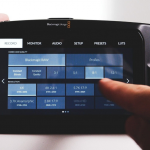
OUR VERDICT
The Amazon Fire TV Cube is an intrepid experiment for the future of home entertainment. It makes a strong case for TV voice control, but Alexa’s limitations in natural language understanding – and sometimes basic playback controls – are enough to prevent the Fire TV Cube from killing the remote for good.
FOR
- 4K HDR playback
- TV/AV control center
- Still includes a remote
AGAINST
- No Dolby Vision (though it’s coming)
- Requires said remote
The Amazon Fire TV Cube is the most premium and feature-packed model in Amazon’s range of Fire TV streaming devices – and it just got a much bigger audience.
The Fire TV Cube, previously only available in the US, is now set to come to Canada, UK, Germany, and Japan too, with a new refreshed model boasting four times the processing power than its previous iteration, and (finally) support for Dolby Vision, even if the shape and external design remains unchanged. But hey, the rollout to other territories seems a good a time as any to update the Cube’s specs.
The Fire TV Cube itself is a blend of Amazon living room technologies, combining the strengths of Fire TV’s streaming services with the convenience of Alexa’s voice controls. Part speaker, part streaming box, the Fire TV Cube seeks to cut down the number of gadgets in your home – while ensuring those that remain are Amazon-made devices.
The result is an intrepid experiment in the future of home entertainment, one in which voice can – and rightly should – replace the remote. As a streaming video player, it offers a fairly robust set of features and its brawny hardware allows for 4K HDR streaming – with the new model adding the Dolby Vision support it clearly needed.
In the end, it’s not the hardware or the feature set that limits the Amazon Fire TV Cube – it’s Alexa that time-and-time again proved to be the biggest help, and the biggest fault, of Amazon’s big venture into voice-controlled video territory.
We’ll be updating this review when we get proper testing time with the new Fire TV Cube, but for now you can read the exact pricing and release date for the old / new models, as well as what we thought of the original in our Fire TV Cube review.
[Update: Amazon is gearing up for a huge launch event in Seattle on September 25. We’re expecting to see new Amazon Echo devices, but there’s always a possibility that the company will announce a new Fire TV device, too.]
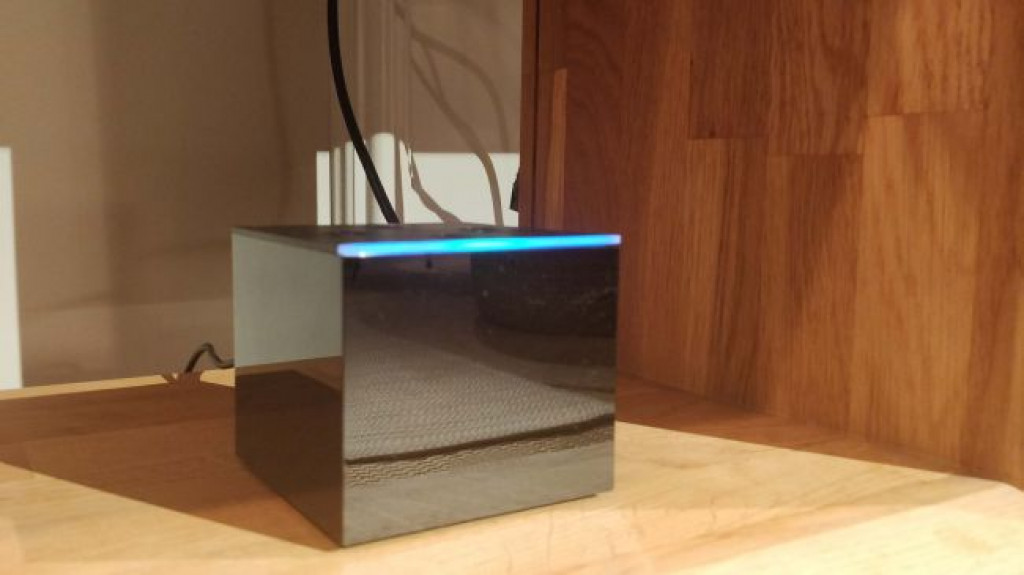
Release date and price
The current Amazon Fire TV Cube model is available in the US for a price of $119.99 (around £90, AU$160), having launched in June 2018. The new model retails for the same $119 in the US, $149 in Canada, and £109 in the UK (with models also releasing in Germany and Japan). It is currently available for pre-order on Amazon, and will start shipping to shoppers on October 10 – though the Japanese release has been pushed back to November 5.
Design

The first is that, while much of this review will focus on the usage of Alexa and how it compares to the traditional experience of using a remote control, it’s worth noting right up at the top that the Fire TV Cube does, in fact, come with a remote (with the refreshed Cube model bundling in the new Alexa remote).
That means no matter how frustrated you are with Alexa and its ability to help you navigate the confines of the Fire TV OS, at any time you can simply pick up the remote and use the navigation buttons to get you where you want to go.
The second is that Alexa, being the marquee feature of the Fire TV Cube is available on almost every current model of the Fire TV and Fire TV Stick via the voice remote – both of which are available for less than the slightly expensive Fire TV Cube.
Those two key points are easy to brush over in the race to evaluate Amazon’s voice-first technology. Reviewers are keen to berate, praise and critique the Fire TV Cube, but realizing that its marquee feature is found elsewhere for less and that a remote can – and will – often be a more pragmatic option over using voice commands help put the player in perspective.
Of course, that said, simply having the option to shout voice commands at a small, box-shaped player without a remote in hand is the unique selling point of the Amazon Fire TV Cube, and with its eight far-field microphones, the Fire TV Cube is incredibly good at picking up what you’re putting down – as good or perhaps even better than the Amazon Echo Show or Amazon Echo are at the task.
To indicate that Alexa is listening, the Fire TV Cube has a glowing blue LED that sits along the top edge of the device, above which you’ll find four control buttons for muting, raising and lowering the volume and paging Alexa. The sides are covered with a reflective, black plastic that can smudge easily if you’re too handsy while placing the system near your TV.
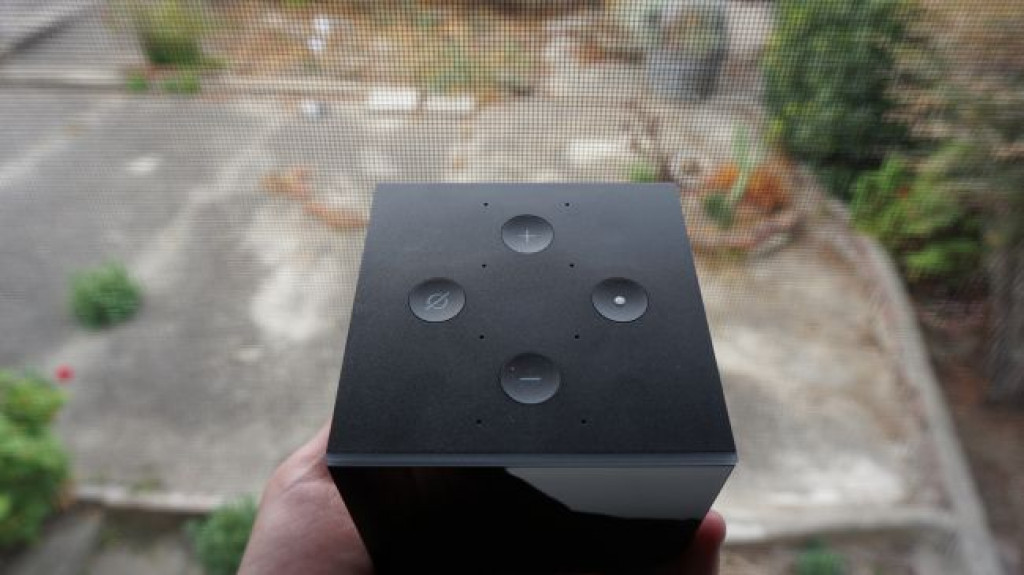
Speaking of placement, you’ll need to be rather judicious when integrating the Fire TV Cube into your home theater setup – it can’t be too close to your speakers lest they overwhelm the built-in microphones, but still needs to be within line of sight for your soundbar, AVR and TV, as it will need to control those via a multi-directional infrared blaster and HDMI CEC.
While that may sound like a trying process, it can be done relatively quickly and once you’re through it, you’ll have a competent control center for your home entertainment setup. Alexa, through its technological wizardry, can change the input of your TV, raise or lower the volume of your soundbar and change the channel on your set-top box using only voice commands, and while the result isn’t revolutionary, it helps make the Fire TV Cube a comprehensive package and one we found ourselves enjoying – even when Alexa, inevitably, let us down.
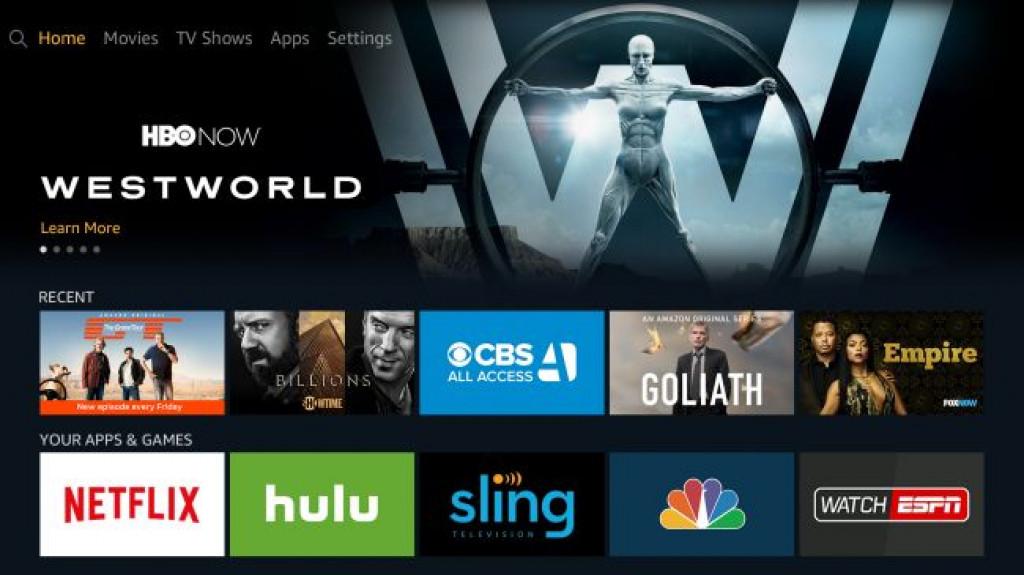
Fire TV content
Once you’re setup it’s time to browse the streaming player’s pool of content – which, thankfully, is a fairly deep aquifer: You’ll find Netflix, HBO, Starz, Hulu, PlayStation Vue and Crackle, alongside smaller services like The CW, NFL Network, AMC and more, with new services added regularly.
That said, Amazon’s own platform Amazon Prime Video takes center stage here. It’s something you’ll run into time and time again, and while Amazon has taken serious steps to highlight content from its other partners, you can’t escape the cloying feeling that Amazon Fire TV Cube is just another way to sell Prime subscriptions.
If you’re a Prime subscriber already, that won’t particularly bother you. You’ll find few areas that you can’t access and few shows and movies on the various home screens that you can’t watch. If you aren’t, however, the Amazon Fire TV Cube might not be the best fit and you should instead turn to Roku for a more service-agnostic streaming box.
Lastly, it’s worth noting that Amazon Fire TV Cube has the ability to play some light games as well. The games are usually akin to what you’d find on the App Store or Google Play Store (which makes sense as Fire TV OS is a variation of Android), but Amazon’s offerings are smaller in number and lesser in quality to what you’d find on, say, the Apple TV 4K or Nvidia Shield, both of which offer high-quality (but still ephemeral) games.
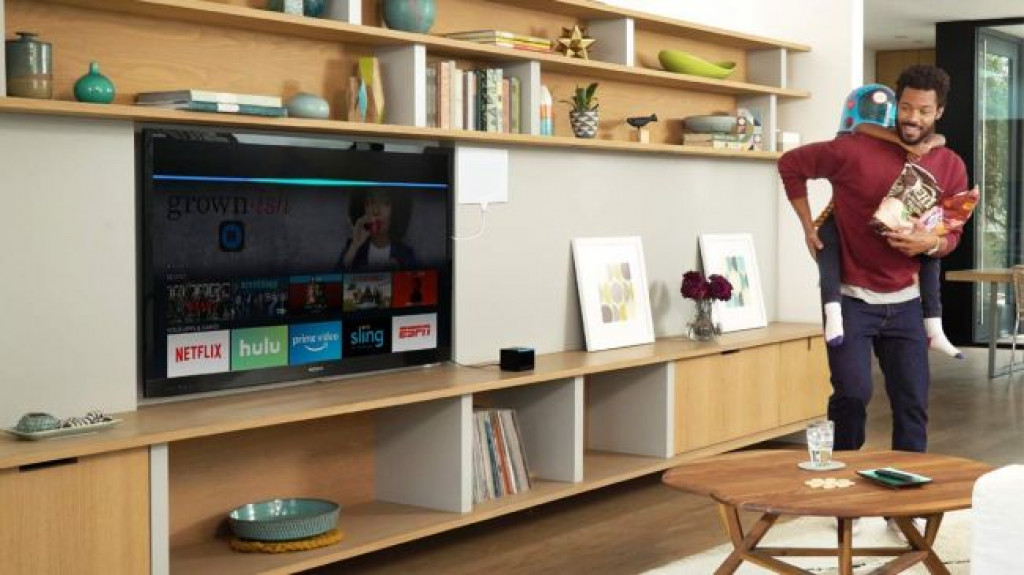
Performance
As far as performance goes, the Fire TV Cube is a pretty tough competitor, capable of playing back 4K Ultra HD content at 60 fps with HDR10 support and Dolby Atmos for audiophiles looking to immerse themselves in a movie or TV show’s soundtrack.
The original Fire TV Cube used a Quad core ARM Cortex-A53 1.5GHz CPU, Mali-450 MP3 GPU and Amlogic S905Z SoC to produce stunning visuals and fast load times throughout the OS – which should only get better and faster with the new model’s hexagon processor. Going from a show on Netflix, back to the home screen and into a movie on Amazon takes a matter of seconds on a 15Mbps or higher Wi-Fi connection, with basically zero pop-in issues along the way.
Pop on a 4K HDR show like All or Nothing: Manchester City or The Grand Tour, and you’ll be treated to a visual showcase of what the Fire TV Cube can do: The opening trailer for The Grand Tour shimmers as scenic vistas and million-dollar cars race past the screen, while the cerulean blue of Manchester City’s jerseys radiate ravishing color tones.
Of course, finding 4K HDR content isn’t always easy. So, should you find yourself watching HD/SDR videos, the Fire TV Cube does a good job working with your 4K TV to upscale them for the higher resolution, often causing them to look just as good as if they were in native 4K.
On several occasions we were convinced what we were watching was actually 4K HDR when in fact it was just regular upscaled HD. This happened while watching a All or Nothing: All Blacks, which stunned us with its highly accurate colors and expanded contrast.

Of course, all of this praise comes with two huge caveats. The first is that, because the Ultra is a 4K HDR streaming device, you actually need to own and use a 4K HDR TV. This sounds silly and yet there will be a number of people who buy an Ultra expecting 4K HDR performance on a 1080p TV. Trust us, it happens.
The second is that you’re going to need that 15Mbps or higher connection to watch videos in 4K HDR. You might be able to scrape by with a little less than that, but if the Fire TV Cube detects a much slower connection speed, it won’t feed you 4K content.
Our experience with the original Fire TV Cube was let down by the lack of Dolby Vision support – and it seems like Amazon has listened. The new model coming this year will have Dolby Vision support, meaning the Cube can now compete with the likes of the Apple TV 4K by offering Atmos and Vision in one package. (Dolby Vision offers a slightly better version of High Dynamic Range that supports brighter TVs and masters content on a scene-by-scene basis rather than using a set range for the entire film or show.)
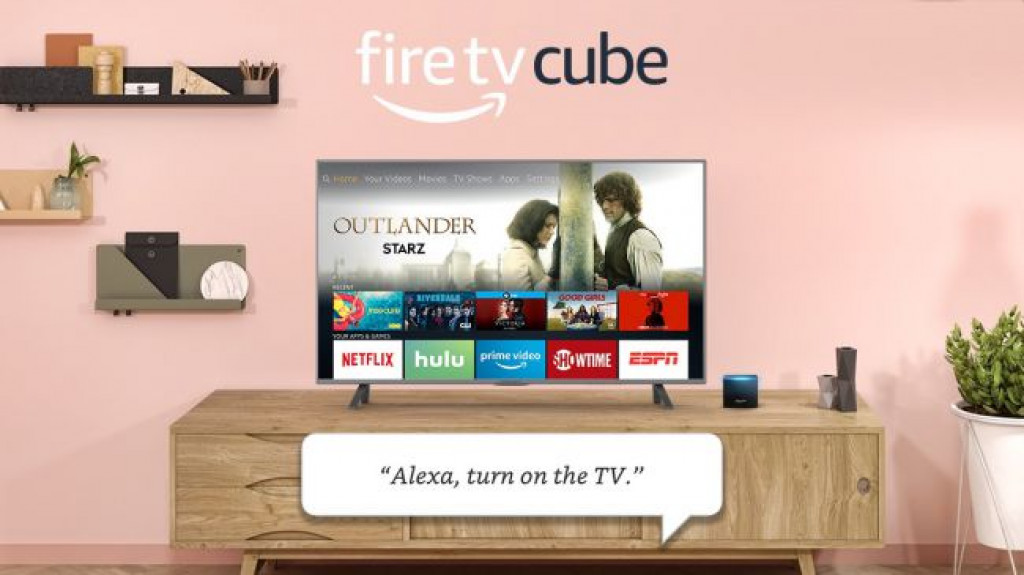
Alexa as a smart assistant
Just as important as solid video reproduction skills is the Amazon Fire TV Cube’s ability to host Alexa – Amazon’s smart assistant. We’ve seen Alexa on a half-dozen platforms in the past (often only in audio form) but none of its prior iterations have shined as brightly as the Fire TV Cube, which offers the perfect homestead for the smart assistant.
We call it “perfect” because a big-screen TV gives visual cues in addition to the audio you’ll hear on other platforms – a crucial component once you’ve experienced it.
Having a screen means you’ll be able to see products before you buy them if you use your Amazon devices for shopping; seeing the lyrics for any song you play on Prime Music and showing you all of your options when you search for shows and movies on Prime Video.
More than simple convenience, having a video component opens a plethora of new skills. If you have a compatible smart camera, you can use the Amazon Fire TV Cube to show you a live video stream of what your camera is seeing. If you want restaurant recommendations or movie times, those too will pop up on the screen, alongside their ratings and distance from your home. Alexa could certainly do all of this via voice, but having a screen to display visual information radically improves the usability of the system.

Unfortunately, however, Alexa is still in development and its interpretation and navigational skills are sometimes … well, lacking.
One example of that happens when you go to watch Netflix. You can absolutely ask Alexa to open the Netflix app but, if you have multiple accounts setup, you won’t be able to use your voice to select your particular account and will need to locate your remote.
Something similarly irksome happens when the Fire TV Cube goes into sleep mode: If you pause video for a few minutes, the Fire TV Cube will stop all video that’s on-screen and turn on a screensaver. When you return, you can’t ask Alexa to “resume” or “resume what I was playing” and must go back and locate that content. That’s easier said than done for shows like, say, Stranger Things, but far more difficult if you’re watching a show with a long title.
Making matters worse, Alexa, for all its advancements in the last few years, still requires precise language to operate. To start an episode from the beginning, you can’t “Alexa, start this episode over” and must always say “Alexa, start over” to get the result you want. It’s that way for fast-forwarding or rewinding or playback controls of any sort – you either need to say it in Alexa-speak or pick up your remote and do it yourself.

In Amazon’s press conference for the new model, the voice assistant still struggled to understand commands, taking more than one attempt to find the service or episode being looked for. (We were treated to such reassuring words as “It usually works.”)
All of this happens on top of Alexa’s usual misinterpretations and foibles. Asking questions outside of basic trivia can still often lead to the feared response of “I don’t know how to help with that yet” and sometimes even total non-responses to inquiries.
It’s not that Amazon’s competitors – Google Assistant and Siri – don’t have these problems, they do, but they feel more pronounced here than on any other platform. Amazon is obviously working on its smart assistant all the time, but some more headway needs to be made before being beyond criticism – and that includes the new incoming Fire TV Cube model too.
Final verdict
The Fire TV Cube is, by far, our favorite Amazon streaming device – better in so many ways than the Amazon Fire TV dongle that was released in 2017. That is largely due to the fact that the Fire TV Cube not only offers hands-free controls for video playback, but can also do all the heavy lifting of controlling your home entertainment setup. Add to that the simple-but-brilliant visual cues Amazon has added for Alexa’s basic skill set and you have a very strong contender for the best streaming video player. The processor upgrade and inclusion of Dolby Vision for the new model is only set to help that reputation.
Alexa, however, despite having many strengths, still fails at the most crucial of moments, requiring you to revert back to the remote the minute you feel comfortable with an all-voice controlled future.
The new Cube hasn’t changed much on the surface, either, but the processor upgrade is likely to make a fast device even faster, even if Alexa isn’t yet where it needs to be.
But if you can look past the minor foibles, the Amazon Fire TV Cube is a smart, visually adept streaming video player, one that could one day replace the remote… and the Roku, too. Until that day comes, however, you might just want to keep both.
Source: techradar.com






































